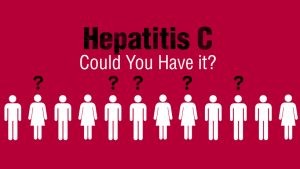
According to the CDC, approximately 2.7 to 3.9 million people are chronically infected with Hepatitis C (HCV) and of every 100 persons infected, 1 in 5 will die from the consequences of chronic infection. One of the means of dying from HCV is the development of hepatocellular carcinoma or liver cancer which is one of few cancers that have increased in incidence in the United States in the last 10 years with an estimated 42,220 new cases for 2018. These statistics translates to a projected 30,200 death in 2018 and of several hundred thousand deaths in the future, all because of a treatable infectious disease.
Among populations at risk for infection are adults born from 1945 to 1965, more commonly known as the “Baby Boomer” population, who had blood transfusions or organ transplantation prior to 1992 when screening for HCV began. They comprise approximately three-fourths of patients suffering from the disease. In 2013, both the CDC and US Preventative Services Task Force have recommended one-time HCV screening for this population.
However, in a recently published article titled Hepatitis C Virus Screening Trends: Serial Cross-Sectional Analysis of the National Health Interview Survey Population, 2013-2015[i], it was found that screening rates for baby boomers was only at 11.5%-12.8%. Other populations studied, both younger and older then baby boomers, had similarly low screening rates.
It was found that barriers existed at multiple levels which prevented the target population from being screened for HCV. These include low awareness of HCV prevalence and screening recommendations among healthcare providers as well as insufficient communication skills to impart the importance of screening to patients. Among patients, lack of knowledge of HCV infection and transmission and lack of health insurance to pay for screening was found to be barriers to the screening.
A recurring barrier that needs to be addressed in both patients and providers is the lack of education on the disease itself. Increasing efforts to raise awareness of the importance of screening as well as the availability of new treatment options that have exceptionally high cure rates should be undertaken so that individuals may avail of the one-time screening to determine the presence or absence of infection.
Another barrier that was found was the lack of adequate funding for HCV prevention and control and inadequate insurance reimbursement. These policies are not economically sound since screening is only a singular event and the cost of treating the illness during the early phases of infections is far less than the cost of treatment once the complications such as cirrhosis and liver cancer develop.
The need for a coherent national strategy is imminent since HCV is a national problem and causes more deaths than all 60 of CDC notifiable diseases combined.
Daniel Lising is a research assistant for the O’Neill Institute’s Hepatitis Policy Project and an LLM in Global Health student at Georgetown University Law Center.
[i]Kasting, M.L., Giuliano, A.R, Reich, R.R.et.al. Hepatitis C Virus Screening Trends: Serial Cross-Sectional Analysis of the National Health Interview Survey Population, 2013-2015, Cancer, Epidemiol, Biomarker Prev; 27(4) 1-11 (2018)



